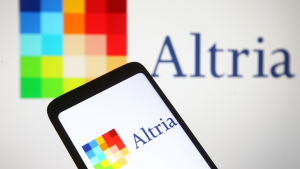Return on invested capital is calculated by dividing the net operating profit after tax by the invested capital. Simply put, return on invested capital measures a firm’s efficiency in allocating capital to generate profits. Since the focus is on blue-chip stocks, several names also yield attractive dividends.
In my view, these long-term value stocks are worth holding until 2030. Of course, it would be unrealistic to expect returns from these ideas that are like growth stocks. However, these stocks with high ROIC stabilize the portfolio as they have a low beta.
Let’s talk about the reasons to be positive on these value stocks.
Tesla (TSLA)

In the last three years, Tesla (NASDAQ:TSLA) stock has reported an average ROIC of 20.34%. Of course, some companies have a better average during this period. For example, Nvidia (NASDAQ:NVDA) has reported an average ROIC of 39.42% in the last three years.
However, valuations look stretched for NVDA stock and I believe TSLA stock is undervalued. That’s the reason for talking about the stock. Of course, Tesla will likely create value in the coming years and is worth holding until 2030.
It’s worth noting that the EV industry faces macroeconomic challenges in the near term. However, the long-term outlook remains positive and the best part of growth might still be due for Tesla. To put things into perspective, the company expects to boost annual EV production to 20 million units by 2030.
Since we are talking about high ROIC, it’s worth mentioning that Tesla reported an operating cash flow of $13.3 billion for 2023. The company’s business is already a cash flow machine and I expect operating and free cash flows to swell in the coming years.
Home Depot (HD)

The Home Depot (NYSE:HD) is another name among long-term value stocks to buy with an attractive ROIC. The company’s ROIC has averaged 32.99% in the last three years. Besides trading at an attractive forward price-earnings ratio of 23.3, HD stock offers a dividend yield of 2.3%.
An important point is that the U.S. economy is driven by consumption spending. With a hard landing likely by summer, policymakers will focus on boosting spending through potential rate cuts. This will be bullish for Home Depot and I expect the stock to trend higher.
As an overview, the company operates as a home improvement retailer. For the last financial year, the company’s revenue declined by 3% on a year-on-year basis to $153 billion. Operating cash flow was robust, however, at $21.2 million. Home Depot also announced a 7% increase in quarterly dividend, equating to an annual dividend of $9 per share. With strong financial metrics and potential rate cuts impending, it’s a good time to buy HD stock.
Altria (MO)

When looking at some of the most undervalued blue-chip names, it’s difficult to ignore Altria (NYSE:MO). The stock has been depressed for an extended period and trades at a forward price-earnings ratio of 8.
Further, the stock offers a dividend yield of 9.76% and I believe that dividends are sustainable. I must add that Altria reported an average (three-year) ROIC of 22.91%. Even in 10 years, the average ROIC is 16.62%.
Regarding business developments, Altria has been pursuing a gradual shift away from the smokable segment. The smokable products remain the cash flow machine. For 2023, the revenue from this segment was $78 billion. Even with revenue de-growth, the business will generate robust cash flows and support investment in the smoke-free business.
Altria reported revenue growth of 3.4% to $2.7 billion in the oral tobacco segment. It’s worth noting that Altria is working with regulators to eliminate illicit e-vapor products from the market. This can be another high-growth segment once regulatory headwinds wane.
On the date of publication, Faisal Humayun did not hold (either directly or indirectly) any positions in the securities mentioned in this article. The opinions expressed in this article are those of the writer, subject to the InvestorPlace.com Publishing Guidelines.
Faisal Humayun is a senior research analyst with 12 years of industry experience in the field of credit research, equity research and financial modeling. Faisal has authored over 1,500 stock specific articles with focus on the technology, energy and commodities sector.
